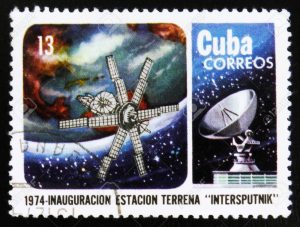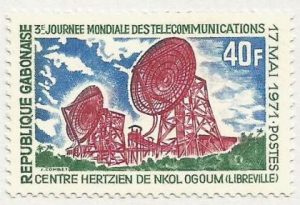By August Hagemann
On Friday, April 5, Miami University’s Havighurst Center for Russian and Post-Soviet Studies hosted Dr. Christine Evans of the University of Wisconsin Milwaukee as the first keynote speaker in its Young Researchers’ conference. The conference, now in its 16th year, presents an opportunity for those who are about to receive or have just received their PhDs in areas relating to Russian studies to present their research with other up-and-coming scholars in the field, as well as to hear talks from experts like Dr. Evans.
In keeping with this year’s conference theme, “Technologies and Narratives of Truth and Power,” Dr. Evans lectured about her ongoing work on communication satellites during the Space Race. She argued that while most Space Race technologies inspired people to think about leaving Earth for other worlds, communication satellites instead focused on bringing home the fantastical, and transforming Earth itself. Both the Western and Eastern blocs built and installed communication satellites, which functioned in quite similar ways. Within the Soviet sphere of influence, the satellites fell under the jurisdiction of a company called Intersputnik, founded in 1971. In Western Europe and America, another satellite company, Intelsat, was founded in 1964. Initially, Intersputnik presented a direct challenge to Intelsat. Many West European nations working with Intelsat felt underrepresented; the number of votes a country received on company decisions was based on how much funding the country provided, so the United States always held a decisive majority. Though the international geopolitical interests of the United States and Western Europe may often have aligned, there was an economic component to holding a controlling stake in Intelsat as well — the business of manufacturing the high-technology components needed to sustain a communication satellite network was quite lucrative. Intersputnik, on the other hand, was organized such that each participating country got 1 vote. Dr. Evans argues that this was a direct and intentional challenge to the United States’ dominance in space technology in Western Europe. Intersputnik was not without its own somewhat imperialistic character, however — members of the Eastern bloc were also interested in taking on high-technology manufacturing projects, but almost always these components were manufactured in the Soviet Union, and then shipped to be assembled wherever the new receiver — called an Earth station — was being constructed.
As time went on, the level of collaboration and similarity between these two entities became greater. Intelsat eventually adopted the one country one vote voting structure under pressure from West European countries and competition from Intersputnik. Further, both companies also discovered that they could utilize signals from the other company’s satellites, simply by turning their receiving dishes to face a different direction. Such ease of access and similarity of technology made collaboration all but inevitable.
Such similarities between the two companies also lead them to transform the world in very similar ways as well. To demonstrate this, Dr. Evans analyzed images of Earth stations on postage stamps from both Intelsat as well as Intersputnik countries. She found that the imagery of countries cooperating with both companies was incredibly similar. Front and center would be the Earth station itself, with a distinctive radio dish atop a round building. The backdrop, however, would almost without fail contain the national imagery and narrative of whatever country the station was located in. For example, the stamp commemorating the opening of an Intelsat Earth station in Gabon set the station against the lush forests for which the country is known, while the stamp from an Intersputnik station in Cuba depicts an incredibly similar round building, topped with a receiver dish, sitting overlooking a picturesque bay like those for which Cuba is known. Dr. Evans argued that, in a sense, these stamps depict a flattening of various histories of colonization during the Cold War. In every case, the imperial object — the Earth Station — is front and center, framed by the imagery of whatever nation is actually hosting the station. In one sense, the Earth stations were anti-colonial; they put Space Age technologies into countries which often could never have afforded to develop such technologies themselves. This means that these nations then also gained all the benefits that came with being connected to a communications satellite network. However, it was still primarily the US (for Intelsat countries) and the Soviet Union (for Intersputnik countries) who built and assembled this technology, and who often decided where exactly it would go. In this sense, the communication satellite networks also solidified imperialistic structures.
What is most notable to Dr. Evans, however, is that both Intelsat and Intersputnik did indeed have these effects on the countries they worked in. She argues that through intensive collaboration and similarity both in the technology they used and the effects they had on the world, Intelsat and Intersputnik both contributed, albeit asymmetrically to globalization. She contends that this refutes the narrative of globalization as stemming primarily from the United States and Western Europe, and depicts it as more of a genuinely global process, with aspects from both the Eastern as well as Western factions of the Cold War. While much of the Space Race was focused on lifting humanity off the Earth, communication satellites from all countries were helping to change everything for the people who stayed back.
August Hagemann is a junior majoring in Russian, East European, and Eurasian Studies


